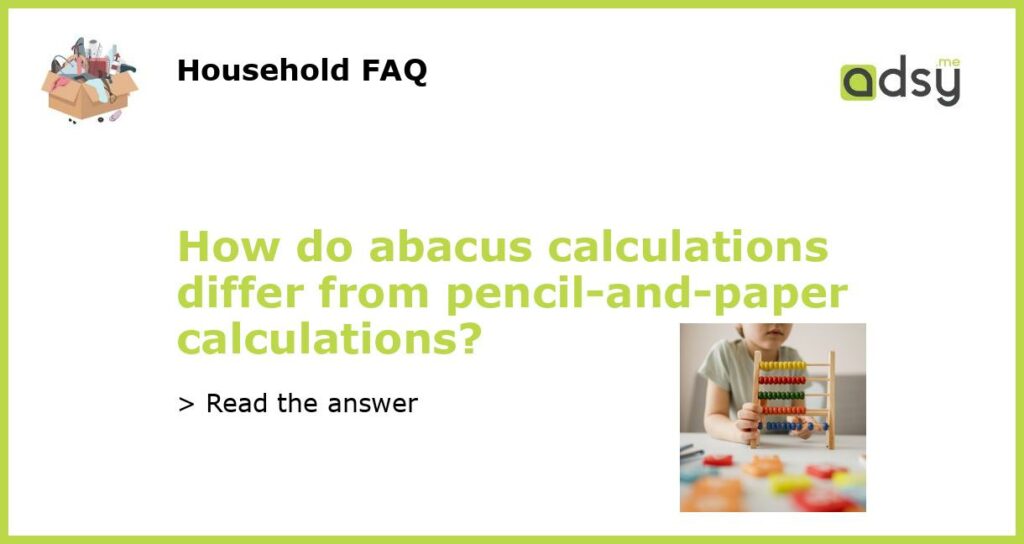Understanding the Basics of Abacus Calculations
The abacus is a device that can perform simple arithmetic operations such as addition, subtraction, multiplication, and division. Unlike pencil-and-paper calculations that we are familiar with, abacus calculations involve the physical movement of the beads on the device which allows for fast and accurate computation of numbers. Abacus calculations were invented in ancient times and are still widely used today, mainly in countries such as China and Japan.
The Physical Movement of Beads
The abacus consists of a rectangular frame that holds a number of vertical rods. Each rod has a set of beads that can be moved up and down. The beads are divided into two parts, with the upper section usually having five beads and the lower section having two. The position of the beads on the rod determines their value. For example, when all the beads are at the top, their total value is equal to five.
The Role of Visual Memory
Abacus calculations require a strong visual memory as the user needs to picture the beads in their minds to perform calculations. They must be able to remember the position of each bead and the value it represents. It helps to have a good imagination and visualization skills to work effectively with the abacus. With practice, the user can perform calculations at a rapid pace.
Benefits of Abacus Calculations
Abacus calculations offer several benefits over pencil-and-paper calculations. They are faster and more accurate since users can operate them quickly and without mistakes. People who learn abacus calculations are known to develop better concentration, visualization skills, and memory. This makes it an excellent tool for children who are starting to learn mathematics. In addition, abacus calculations have been found to stimulate the brain and help in reducing stress levels.
In summary, abacus calculations differ from pencil-and-paper calculations in several ways. The physical movement of beads, the reliance on visual memory, and the benefits they offer over traditional methods make them valuable tools for those who want to improve their mathematical abilities. With practice and dedication, anyone can become proficient in abacus calculations and reap the numerous benefits they offer.






